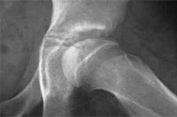Trauma Induced Chronic Osteomyelitis: Specimens from Sinus Tract or Bone?
DOI:
https://doi.org/10.31661/gmj.v2i4.115Keywords:
Bone diseases, Diagnosis, Infectious diseases, Osteomyelitis, TraumaAbstract
Background: The choice of an accurate microorganism isolation from chronic osteomyelitis has been a big conflict between clinicians during the time. The aim of this study is to compare specimens from sinus tract and bone, for an accurate treatment of trauma induced chronic osteomyelitis (CO).
Patients and Methods: A total of 139 patients with trauma induced CO, were entered to the study. The specimens were taken from both sinus tract and bone. All specimens were cultured by Karby Bauer method. finally isolated microorganisms from sinus tract and bone specimens, were compared.
Results:The overall concordance between sinus tract and bone cultures was 46%. There was 17% false negative results in sinus tract specimens, but only 5.6% of the bone specimens had false negative results. In all cases, which the microorganisms were found in the sinus tract, they were isolated from the bone also.
Conclusion: This study suggests that bone specimens are more reliable in diagnosis of trauma induced CO. Culture result of sinus tract specimen is reliable, except for Staphylococcus epidermidis, Proteus, and Candida albicans; In other conditions antibiotic therapy can be started based on sinus tract culture, until the bone culture becomes ready.








